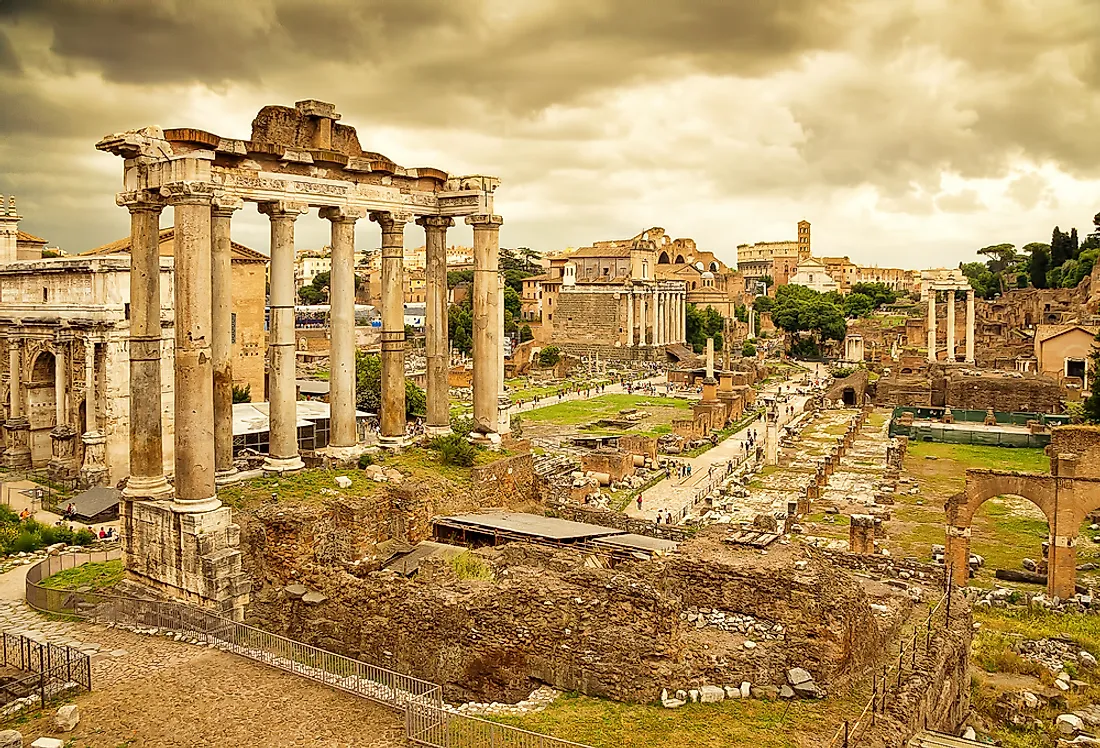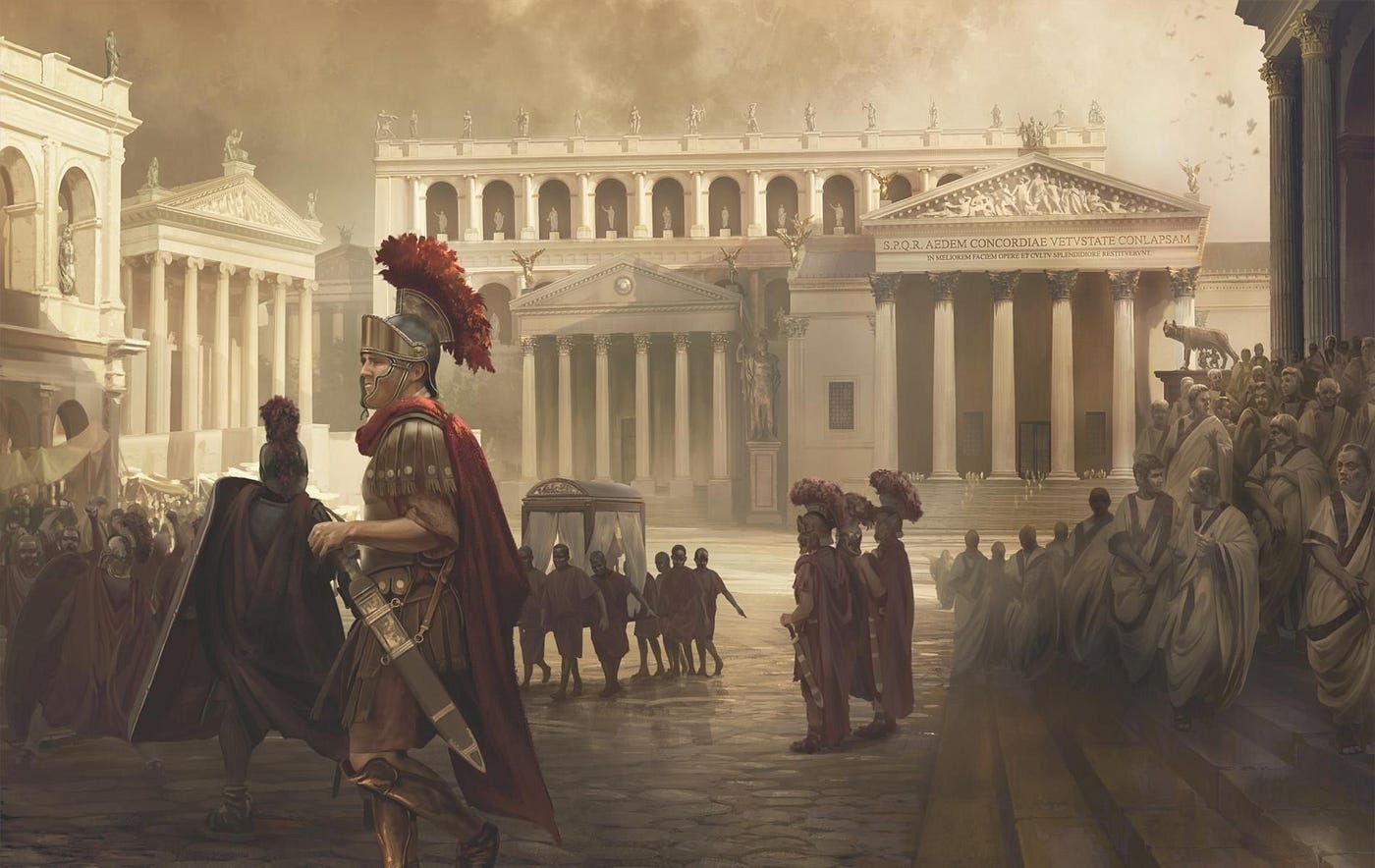The Rise and Fall of the Roman Empire: A Historical Journey
 The Roman Empire stands as one of the most iconic and influential civilizations in human history. Its legacy reverberates through time, shaping political, social, and cultural landscapes across centuries. From its humble beginnings as a small city-state on the Italian Peninsula to its vast dominion stretching from Britain to Mesopotamia, the Roman Empire's trajectory is a tale of conquest, innovation, and eventual decline. In this essay, we will explore the rise and fall of the Roman Empire, examining key factors that propelled its ascent and eventual demise.
The Roman Empire stands as one of the most iconic and influential civilizations in human history. Its legacy reverberates through time, shaping political, social, and cultural landscapes across centuries. From its humble beginnings as a small city-state on the Italian Peninsula to its vast dominion stretching from Britain to Mesopotamia, the Roman Empire's trajectory is a tale of conquest, innovation, and eventual decline. In this essay, we will explore the rise and fall of the Roman Empire, examining key factors that propelled its ascent and eventual demise.
The Rise of Rome
The foundation and early republic saw the legendary founding of Rome by Romulus and Remus. The development of the Roman Republic was characterized by a system of checks and balances, representative government, and military prowess. Expansion and consolidation of power in the Mediterranean region followed, including the conquest of neighboring territories such as Etruria, Latium, and Magna Graecia.
The Punic Wars marked a significant turning point in Roman history. Conflict with Carthage, a powerful maritime empire in North Africa, led to Hannibal's invasion of Italy and Rome's eventual victory. This victory expanded Rome's territories to include Sicily, Hispania, and North Africa, establishing Rome as the dominant power in the Mediterranean.
The transition to empire was marked by internal strife and the decline of the Republic. Political corruption, economic inequality, and military unrest paved the way for the rise of Julius Caesar and eventually Augustus Caesar as the first emperor of Rome, marking the beginning of the Imperial era.
The Pax Romana The Golden Age of Rome saw Augustus's reforms and the establishment of a stable government system. Economic prosperity was fueled by trade, agriculture, and infrastructure development. A cultural flourishing occurred, including advancements in literature, art, and architecture.
The Golden Age of Rome saw Augustus's reforms and the establishment of a stable government system. Economic prosperity was fueled by trade, agriculture, and infrastructure development. A cultural flourishing occurred, including advancements in literature, art, and architecture.
Expansion and administration were key features of the Pax Romana. Annexation of new territories, such as Gaul, Britain, and parts of Germania, occurred, and a sophisticated administrative bureaucracy was developed to govern diverse regions. Roman citizenship and cultural assimilation were promoted, fostering unity within the empire.
Challenges and reforms emerged during this period. Border conflicts with neighboring powers, economic strains caused by excessive taxation and inflation, and the initiation of reforms by emperors like Diocletian and Constantine to address administrative inefficiencies and social unrest were all significant factors.
The Decline and Fall External pressures began to mount on the Roman Empire. Barbarian invasions, Persian Wars, and the decline of military discipline all contributed to the weakening of Roman authority. Internally, political fragmentation, economic decline, and social unrest further destabilized the empire.
External pressures began to mount on the Roman Empire. Barbarian invasions, Persian Wars, and the decline of military discipline all contributed to the weakening of Roman authority. Internally, political fragmentation, economic decline, and social unrest further destabilized the empire.
The final collapse of the Roman Empire was marked by barbarian invasions and internal instability. The sack of Rome by Visigoths in 410 AD and Vandals in 455 AD symbolized the collapse of Roman authority in the West. The fall of the Western Roman Empire occurred with the deposition of the last Roman emperor, Romulus Augustulus, by Germanic chieftain Odoacer in 476 AD.
Despite the collapse of the Western Roman Empire, the Eastern Roman Empire, centered around Constantinople, continued to thrive as the Byzantine Empire, enduring for another millennium. The rise and fall of the Roman Empire serve as a cautionary tale, reminding us of the fragility of empires and the importance of addressing internal weaknesses to ensure long-term sustainability and resilience. The legacy of Rome endures, shaping the course of Western civilization and leaving an indelible mark on the world stage.
The rise and fall of the Roman Empire serve as a cautionary tale, reminding us of the fragility of empires and the importance of addressing internal weaknesses to ensure long-term sustainability and resilience. The legacy of Rome endures, shaping the course of Western civilization and leaving an indelible mark on the world stage.
The rise and fall of the Roman Empire offer invaluable insights into the complexities of human civilization. Rome's ascent from a small city-state to a global superpower underscores the transformative power of ambition, innovation, and strategic expansion. The Pax Romana, a period of relative peace and prosperity, highlights the benefits of effective governance, economic stability, and cultural flourishing. However, the empire's decline and eventual collapse reveal the inherent vulnerabilities of centralized power, external pressures, and internal divisions. The challenges faced by Rome—barbarian invasions, economic decline, and political fragmentation—serve as cautionary reminders of the consequences of neglecting fundamental governance principles and socioeconomic dynamics.
However, the empire's decline and eventual collapse reveal the inherent vulnerabilities of centralized power, external pressures, and internal divisions. The challenges faced by Rome—barbarian invasions, economic decline, and political fragmentation—serve as cautionary reminders of the consequences of neglecting fundamental governance principles and socioeconomic dynamics.
Despite its demise in the West, the enduring legacy of Rome persists in various forms, including language, law, architecture, and cultural norms. The Byzantine Empire, the Eastern counterpart of Rome, continued to thrive for centuries, preserving and innovating upon Roman traditions. The lessons gleaned from the rise and fall of the Roman Empire remain relevant in contemporary times. They underscore the importance of adaptive governance, socioeconomic resilience, and global diplomacy in navigating the complexities of an interconnected world.
The lessons gleaned from the rise and fall of the Roman Empire remain relevant in contemporary times. They underscore the importance of adaptive governance, socioeconomic resilience, and global diplomacy in navigating the complexities of an interconnected world.
In conclusion, the Roman Empire's journey—from its humble origins to its eventual collapse—stands as a testament to the triumphs and tribulations of human civilization. By studying its history, we gain valuable insights into the dynamics of power, the complexities of governance, and the enduring legacy of cultural exchange. The story of Rome continues to inspire and educate generations, reminding us of the cyclical nature of history and the enduring quest for greatness.
Moreover, the architectural achievements of the Romans, exemplified by iconic structures such as the Colosseum, the Pantheon, and aqueducts, continue to inspire awe and admiration. The Roman system of roads, bridges, and urban planning laid the groundwork for modern transportation networks and city development strategies.
The enduring cultural legacy of Rome is evident in literature, philosophy, and art. Roman authors such as Virgil, Cicero, and Ovid have left an indelible mark on Western literature. Roman philosophy, influenced by Greek thought, contributed to the development of ethical and political theories that continue to shape intellectual discourse. Furthermore, Roman art and architecture have had a lasting impact on artistic movements throughout history. From Renaissance artists drawing inspiration from classical statues to neoclassical architects emulating Roman designs, the influence of Roman aesthetics permeates through the ages.
Furthermore, Roman art and architecture have had a lasting impact on artistic movements throughout history. From Renaissance artists drawing inspiration from classical statues to neoclassical architects emulating Roman designs, the influence of Roman aesthetics permeates through the ages.
In addition to its cultural contributions, the Roman Empire's religious legacy is profound. The adoption of Christianity as the state religion under Emperor Constantine transformed the religious landscape of Europe and the Mediterranean world. The establishment of the Catholic Church as a central authority in Western Christianity owes much to the organizational structures and administrative practices inherited from the Roman Empire. Despite its eventual decline and fall, the Roman Empire's enduring legacy underscores the resilience and adaptability of human civilization. Its contributions to law, language, architecture, culture, and religion continue to shape the world we inhabit today. By studying the rise and fall of Rome, we gain insights into the complexities of power, governance, and societal change, offering valuable lessons for navigating the challenges of the present and the future.
Despite its eventual decline and fall, the Roman Empire's enduring legacy underscores the resilience and adaptability of human civilization. Its contributions to law, language, architecture, culture, and religion continue to shape the world we inhabit today. By studying the rise and fall of Rome, we gain insights into the complexities of power, governance, and societal change, offering valuable lessons for navigating the challenges of the present and the future.
































